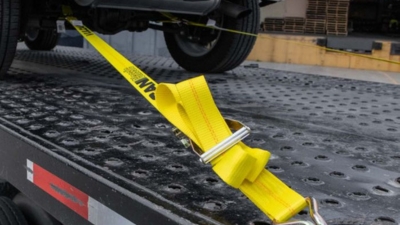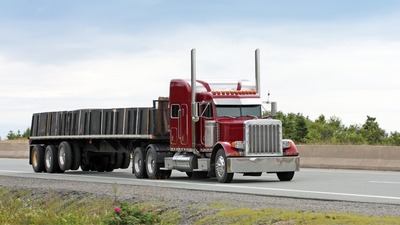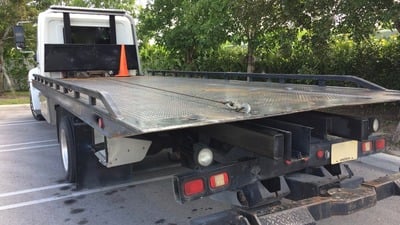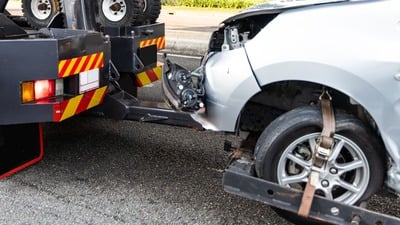Introduction to Ratchet Straps and Their Uses
Ratchet straps are the muscle in your toolbox when it comes to securing cargo. They're simple but mighty. Ratchet straps, also known as tie-down straps, make sure that your load stays put. Whether you're hauling furniture, strapping down a motorcycle, or keeping construction materials in place, these straps handle the job. So, how do they work? They have a ratcheting mechanism that tightens the strap around your cargo. Once you hook the ends to secure points, you crank the ratchet handle until the strap is tight enough. The beauty is in the control it gives you—you decide how snug that strap gets, ensuring your stuff isn't going anywhere. Remember to check them regularly for wear and tear; a worn strap is a no-go.
Different Types of Ratchet Straps
Ratchet straps are essential for securing cargo during transport, and they come in various types to suit different needs. The most common kinds are the standard ratchet straps with flat hooks that are great for flatbed trailers and truck beds. They're simple to hook on and offer a sturdy hold. Another type is the S-hook strap, versatile for many applications and easy to attach to a range of anchor points, making them popular for general use. For heavier loads, J-hook ratchet straps are a go-to; their strong J-hook ends latch on to equipment and cargo securely. If you're hauling something delicate or prone to damage, E-track straps, with their specialized fittings for E-track systems, are perfect for providing a secure and gentle embrace. The key is to pick the strap that matches the weight and sensitivity of your cargo to ensure a safe trip.
The Importance of Load Capacity in Ratchet Straps
When you're tying down cargo, you can't skimp on safety, and that's where load capacity comes into play. Ratchet straps are a staple for securing loads, but they're not all created equal. Each strap comes with a specific load capacity, which tells you how much weight it can handle. This capacity is a critical factor that can make or break the security of your cargo. Choose a strap with a load capacity that exceeds your cargo's weight. This isn't just a safety tip — it's a non-negotiable rule. If you overload your strap, you risk it snapping, and that's trouble you don't want. A snapped strap means cargo can come loose, get damaged, or worse, cause accidents. Always check the label for two key numbers: the Working Load Limit (WLL) and the Break Strength (BS). The WLL is typically a third of the BS and is the maximum load the strap should carry under normal conditions. For example, if a strap has a WLL of 500 lbs, it means your cargo shouldn't weigh more than that. So, the next time you're reaching for a ratchet strap, remember: the right load capacity can be the difference between a smooth ride and a roadside disaster. Handle with care, choose with caution, and secure that load tight.
How to Properly Use a Ratchet Strap
Ratchet straps are lifesavers when you need to secure cargo. But use them wrong, and they're just a tangled mess. Here's how to get it right every time. Open by threading the strap through the spool and back out. Make sure it lays flat, avoiding twists. Now, pull the strap to remove the slack, just so it's snug, not super tight – that's the ratchet's job. Start ratcheting by raising and lowering the handle. Hear that click-click sound? That's the sound of security. Keep going until the strap is tight enough to hold your gear but not so tight it damages your goods or the strap. To release, pull the release tab and open the ratchet handle all the way. The strap should pop loose, ready for you to pull it free. It's that simple. Use ratchet straps wisely, and your cargo won't budge.
Common Mistakes to Avoid When Using Ratchet Straps
When securing loads with ratchet straps, ensure each strap is not twisted; a twist can weaken the strap's strength. Always check the strap's load rating and use it within its limits; overloading can lead to failure. Never tie knots in ratchet straps as it compromises safety and integrity. Use edge protectors to prevent straps from getting cut by sharp edges. Also, regularly inspect for wear and tear; frayed or damaged straps are a no-go. Remember to properly thread the strap through the ratchet mechanism. Incorrectly threaded straps can slip or fail to tighten. Finally, after tensioning the strap, ensure the handle is fully closed to lock the strap in place. Avoiding these pitfalls helps secure your load safely and extend the life of your straps.
Maintenance Tips for Ratchet Straps
Keep ratchet straps away from sharp edges and don’t let them rub against surfaces while you use them; this keeps them from wearing out too fast. After using, make sure they're clean before you put them away – dirt can break them down over time. Dry them well, too, because dampness can lead to mildew and weaken the straps. When you store them, roll them up neatly; this prevents tangles and makes them easy to use next time. Every now and then, check for frays or cuts. If you spot damage, don’t use that strap; it might not hold up when you need it to. Treat them right, and ratchet straps will last longer, saving you money and hassle.
Ratchet Strap Safety Guidelines
When you're using ratchet straps, safety comes first. Think of these as your lifeline for securing cargo; a simple mistake can spell disaster. To start off, always check the working load limit (WLL) — that's the maximum weight each strap can handle. Don’t play guessing games with this. If the load's too heavy, the strap could snap. Before you use them, inspect the straps for wear and tear. Look out for frays, cuts, or broken stitching. If they look rough, it's time to replace them; better safe than sorry. Next up, the ratchet mechanism, the heart of the operation, needs to be in top shape. Make sure it opens and closes smoothly. A jammed or rusty ratchet is a no-go. When you're loading up, spread the strapping evenly across the cargo. Uneven tension can cause shifting or even tipping. Nobody wants that. Once everything's secure, give it all a solid tug to ensure there's no slack. Remember, a loose strap is as good as no strap at all. Finally, during transport, make it a point to check the straps regularly. Vibration from the road can loosen things up over time. A quick pull-over and check could mean the difference between a secure load and one that’s all over the highway. It's all pretty straightforward: use straps in good condition, handle the weight properly, and keep an eye on them. Do this, and you're set for a smooth ride.
The Advantages of Using Ratchet Straps Over Other Methods
When it comes to securing a load, ratchet straps are a clear choice over other methods. They provide a combination of strength, reliability, and ease of use that ropes or bungee cords can't match. Unlike ropes, which require you to have knot-tying skills, ratchet straps come with a simple mechanism. You just pull the strap to your desired tension and then crank the ratchet to lock it in place. This means you can get the tension just right, making sure your load doesn’t shift during transport. Also, ratchet straps can handle heavy loads that would stretch or snap bungee cords which, let's face it, are really only good for light-duty work. With ratchet straps, you get a peace of mind knowing that whatever you're hauling will stay put.
Where to Buy Quality Ratchet Straps
Finding top-notch ratchet straps isn't hard if you know where to look. Head over to any home improvement store; they've got shelves stocked with them. Do you prefer shopping online? truckntow.com will hook you up with various options, and you might snag a deal, too. For the industry pros or those craving something specialised, check out dedicated cargo control retailers or even trucking supply shops. Make sure to scope out products with solid reviews, so you know your straps can handle the load. And consider the brand because a good reputation often means you're getting reliable gear. Keep an eye out for strong webbing material, hefty ratchets, and a load rating that fits your hauling needs.
Conclusion: Ensuring Safety with Proper Ratchet Strap Usage
Always remember, the safety of your load depends on using ratchet straps correctly. Without proper use, you risk damage to your cargo, your vehicle, and even other people. To sum things up, always inspect your straps for wear and tear before use, make sure to select the strap with the right load limit, and follow a correct threading procedure to prevent loosening during transit. Secure your items firmly, but avoid over-tightening as this can damage both your straps and the cargo. After all, a well-secured load is the mark of a responsible transporter. Stay safe and secure out there!





